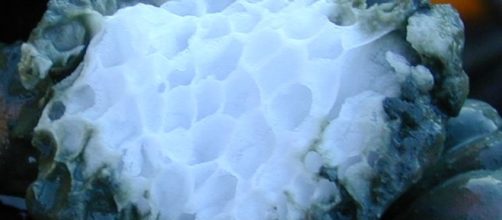A new USGS report challenges the consensus belief that a warming climate would lead to an explosive release of methane into the atmosphere from the breakdown of frozen methane hydrates. Climate alarmists like Al Gore have called this the ‘methane bomb,’ where frozen hydrates stored beneath the permafrost and seabed floors warms up, allowing the trapped gas to escape.
The University of Rochester and U.S. Geological Survey (USGS) reviewed nearly a decade of preceding research done by USGS researchers and other scientific organizations studying these gas hydrates.
The report said that if continued warming continues unabated, any methane released from hydrates would be negligible and large amounts highly unlikely. The report’s “sober, data-driven analyses” couldn’t find any evidence of a large-scale release of the odorless hydrocarbon.
Exclusive: The methane time bomb http://t.co/rfvVzUxfdN
— NEVILLE GILLMORE (@ARTHURSLEA) February 13, 2015
The methane bomb
Methane hydrate, aka methane clathrate, is a naturally occurring compound in which the gas gets trapped inside a lattice-like structure of water similar to ice. It also remains stable at specific temperature and pressure ranges. Researchers have found significant deposits in undersea sediments greater than 1,000 feet and also beneath the permafrost at higher elevations.
Climate alarmists have long argued that if the permafrost thaws, vast amounts of the gas trapped in hydrates would get released. They have maintained that if the Arctic continued to warm, vast reserves of methyl hydrates would decompose and release the greenhouse gas into the air. But this comprehensive review of the current literature reveals the breakdown of methyl hydrates from climate change shows little evidence more would enter the atmosphere.
Energy's Most Dangerous Game https://t.co/oF2DxFgaPj via @forbes
— William Pentland (@CleanBeta) February 17, 2016
Fuel or folly?
Despite methyl hydrates being found globally and mostly along continental shelves, they are different from conventional natural gas and not used for energy production by any country.
They are, however, vulnerable to slight changes in temperature, making methyl hydrates a potentially dangerous substance to extract.
Previous research suggested that the gas was released from hydrates during earlier climatic events and may have sped up global warming. But this new review determined the amounts released were trivial. That’s because what gets unlocked either remains in seafloor deposits, dissipates in the water, or is converted to CO2 by microbes found in the sediment or seawater.
Bubbles of warming, beneath the ice http://t.co/8OvcGKNL
— Mary Vaughn (@jayjay4142) September 17, 2012
Evidence not there
The authors also looked closely at hydrates beneath the Arctic Ocean, where previous studies alleged the rates of methane arising from the seabed floor and into the atmosphere were increasing.
The authors pointed out that the gas being emitted into the atmosphere over the Arctic Ocean can’t be traced to the breakdown of methyl hydrates. Yet the media has been pushing this false narrative for years.
Professor John Kessler, a co-author of the review, said that the “slightly elevated emissions of methane at the sea-air interface” was “rarely attributable to gas hydrate degradation.” The paper also addressed the assumptions made by the Intergovernmental Panel on Climate Change (IPCC) when it incorporated the gas released from hydrates in its assessment report. For now, it seems the ‘methane bomb’ won’t be going off anytime soon.
The paper was published in the latest edition of Reviews of Geophysics.

